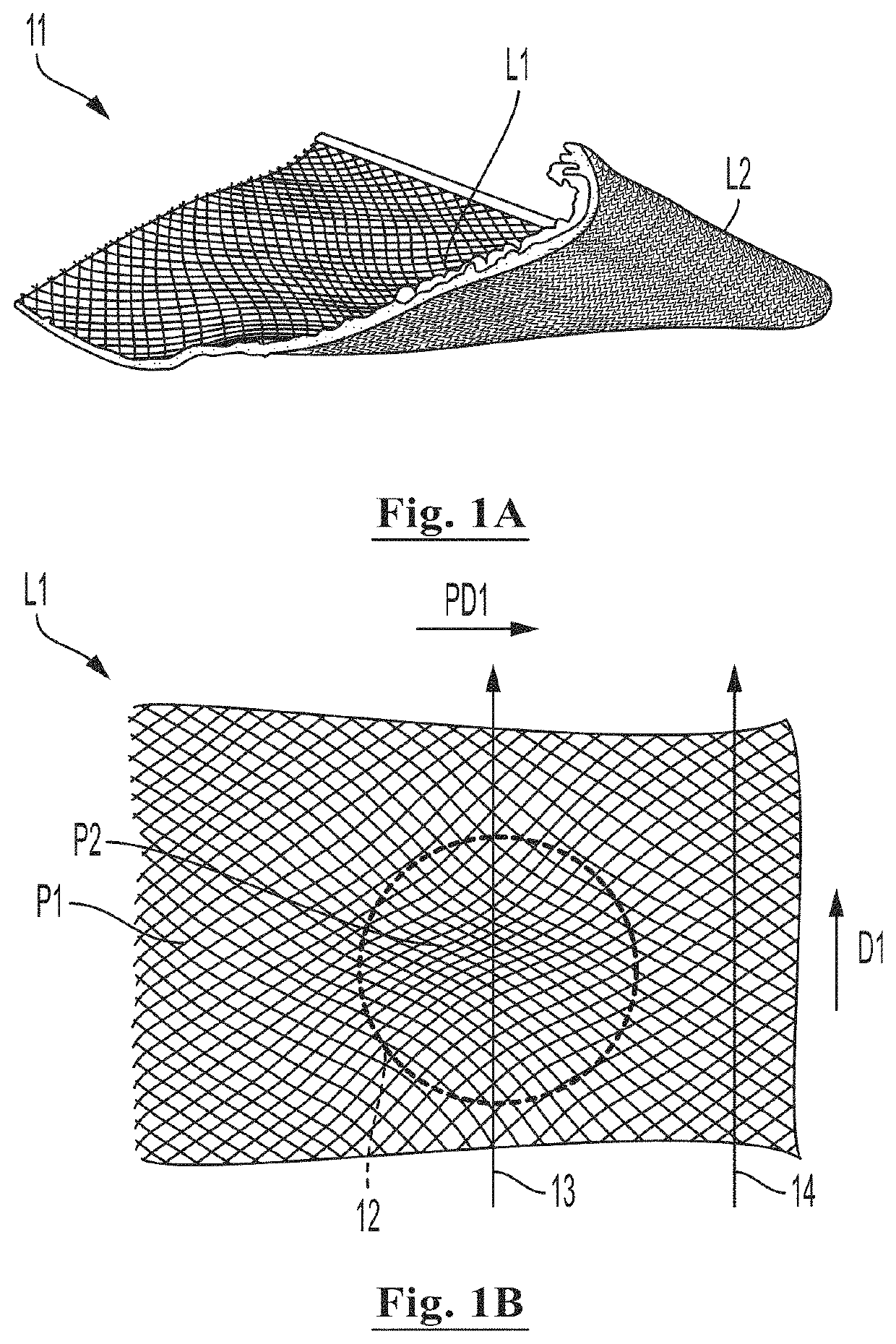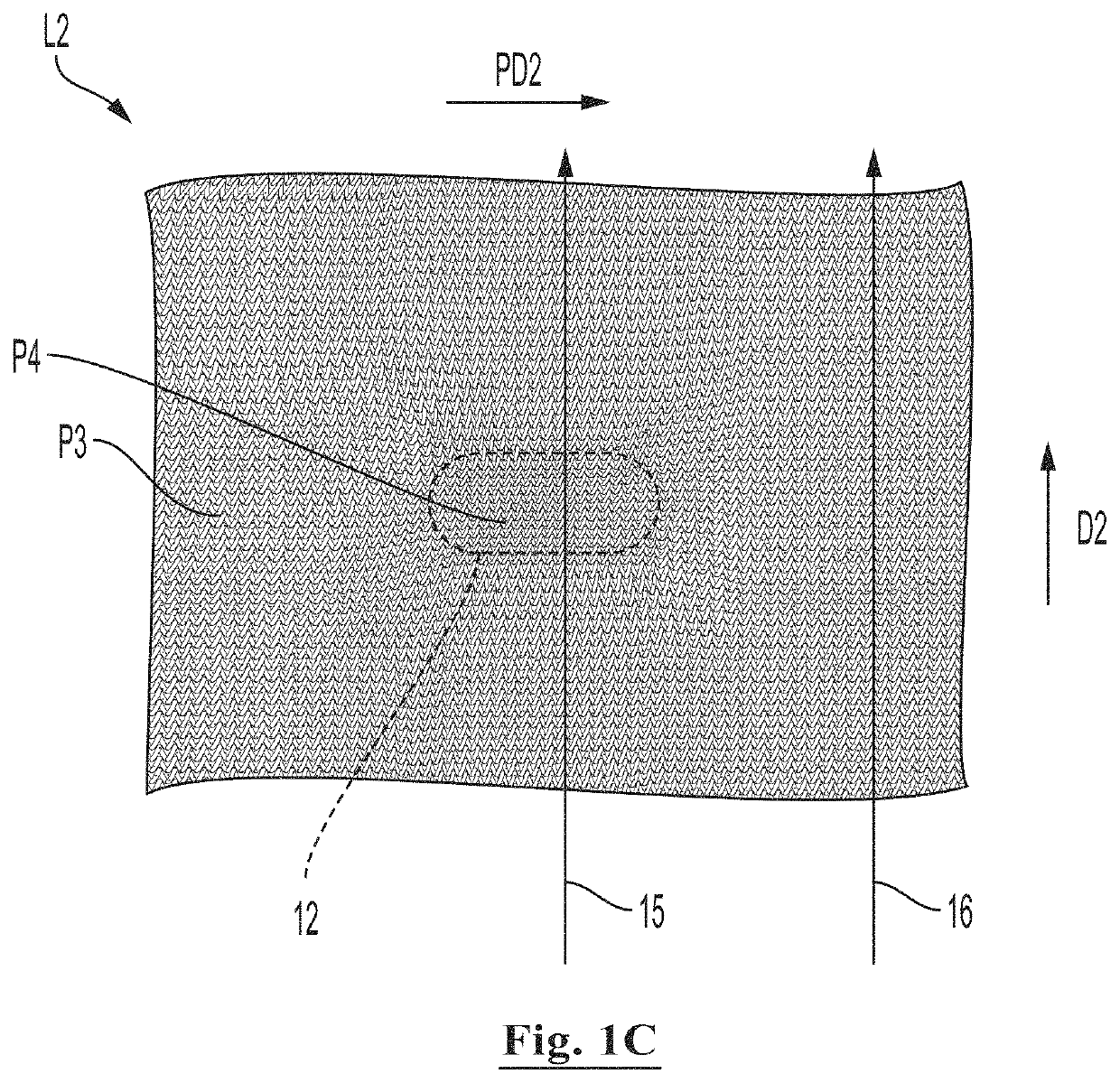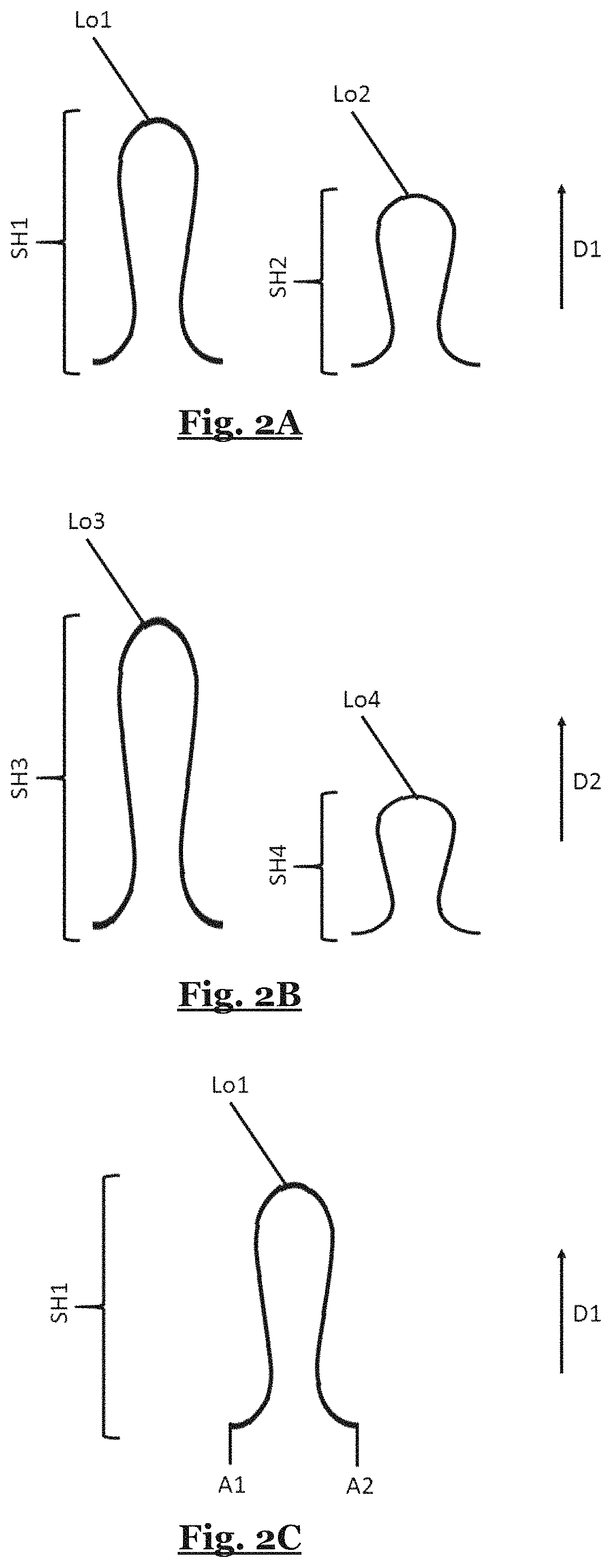Knitted component
a technology of knitted components and components, applied in the field of knitted components, can solve the problems of increasing the cost of the resulting articles of footwear or apparel, limiting the number of different types of yarn that can be used, and reducing the flexibility and support of knitted components, so as to achieve the right level of flexibility and support, prevent injuries during exercise, and bend easily
- Summary
- Abstract
- Description
- Claims
- Application Information
AI Technical Summary
Benefits of technology
Problems solved by technology
Method used
Image
Examples
Embodiment Construction
[0086]In the following only some exemplary embodiments of the invention are described in detail. The person skilled in the art should be aware that these exemplary embodiments can be modified in a number of ways and combined with each other whenever compatible and that certain features may be omitted in so far as they appear dispensable.
[0087]FIGS. 1A-C show an exemplary knitted component 11 according to the invention. The knitted component 11 comprises: (a) a first knitted layer L1 (shown in FIG. 1A and FIG. 1B), comprising a knitted first portion P1 with a first linear loop density along a first direction D1, a knitted second portion P2 with a second linear loop density along the first direction D1, wherein the second linear loop density is greater than the first linear loop density; (b) a second knitted layer L2 (shown in FIG. 1A and FIG. 1C), comprising a knitted third portion P3 with a third linear loop density along a second direction D2, a knitted fourth portion P4 with a fou...
PUM
| Property | Measurement | Unit |
|---|---|---|
| angle | aaaaa | aaaaa |
| angle | aaaaa | aaaaa |
| melting temperature | aaaaa | aaaaa |
Abstract
Description
Claims
Application Information
 Login to View More
Login to View More - R&D
- Intellectual Property
- Life Sciences
- Materials
- Tech Scout
- Unparalleled Data Quality
- Higher Quality Content
- 60% Fewer Hallucinations
Browse by: Latest US Patents, China's latest patents, Technical Efficacy Thesaurus, Application Domain, Technology Topic, Popular Technical Reports.
© 2025 PatSnap. All rights reserved.Legal|Privacy policy|Modern Slavery Act Transparency Statement|Sitemap|About US| Contact US: help@patsnap.com



